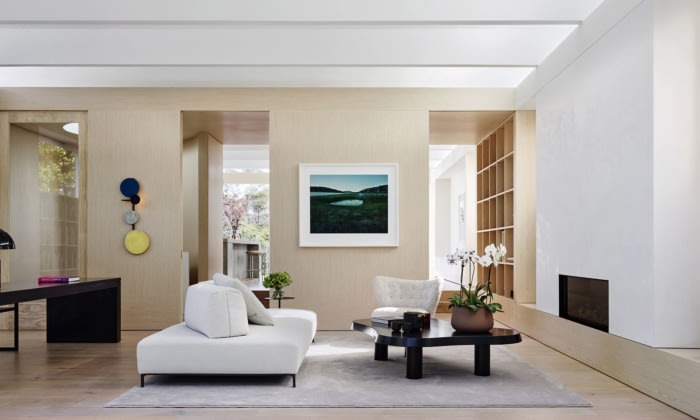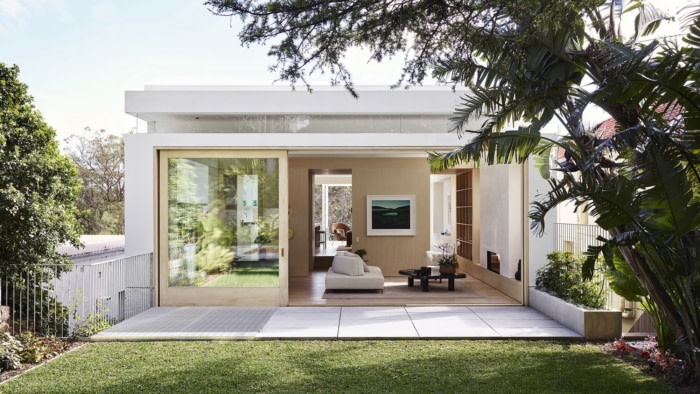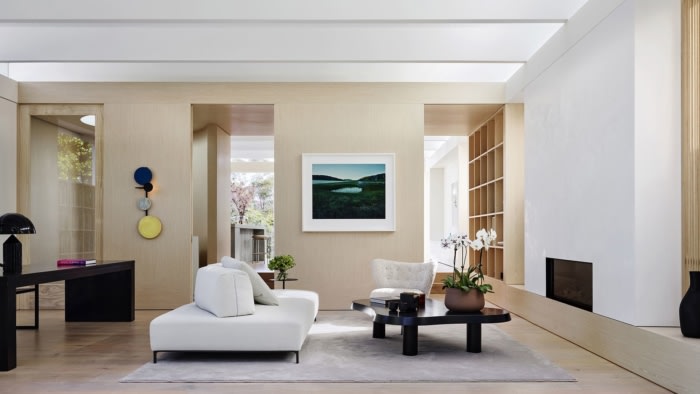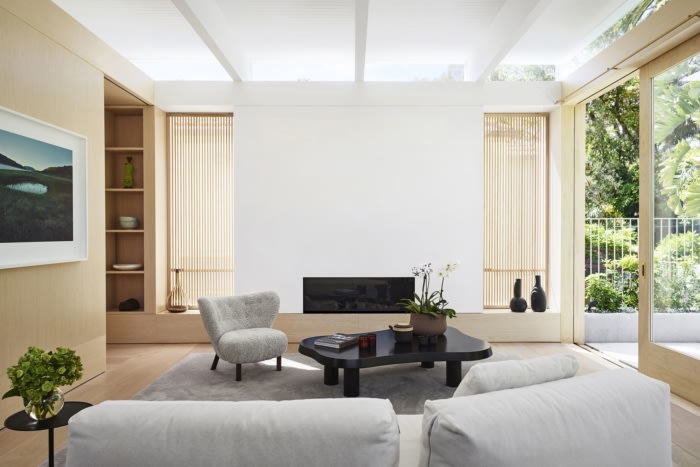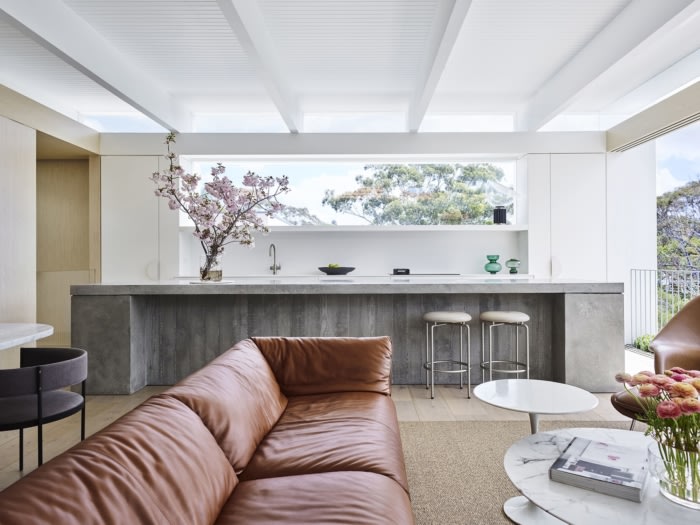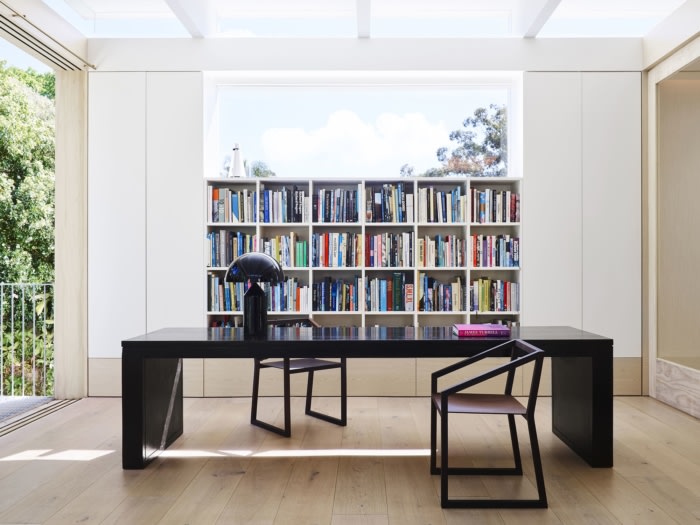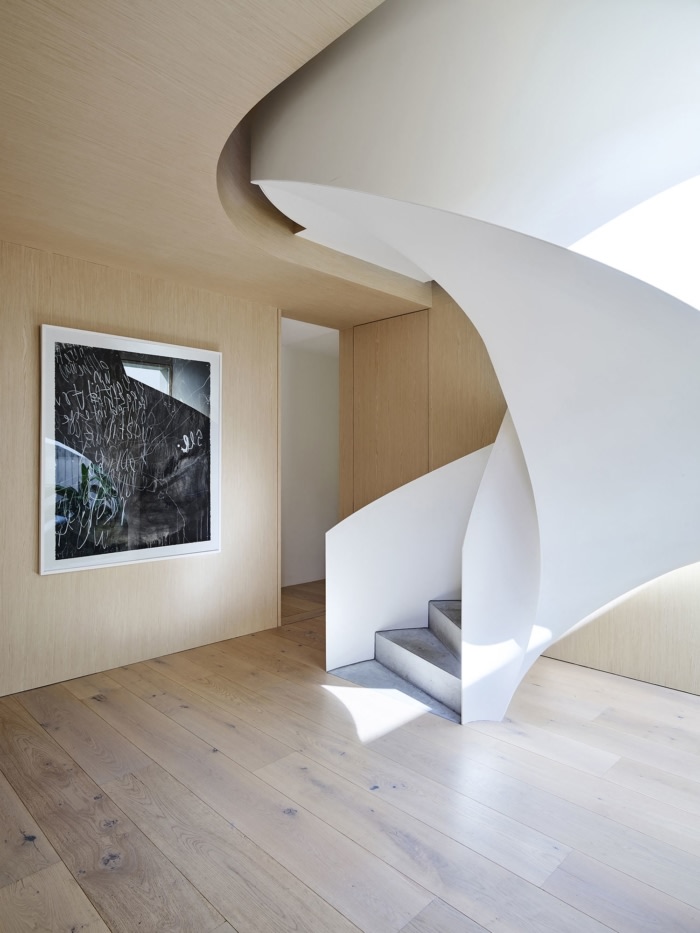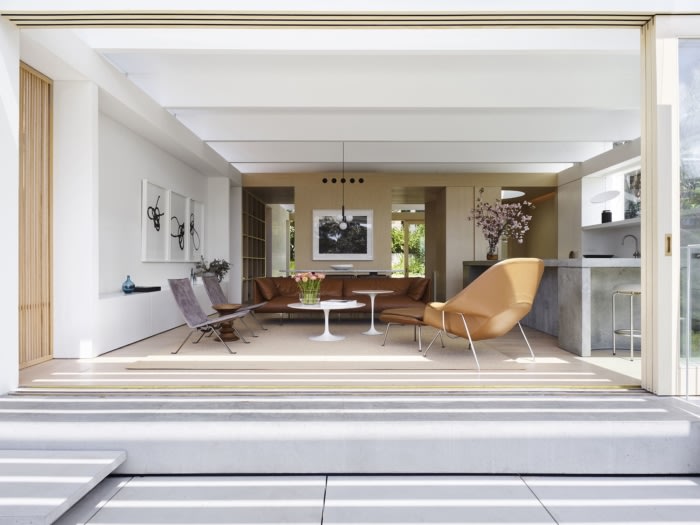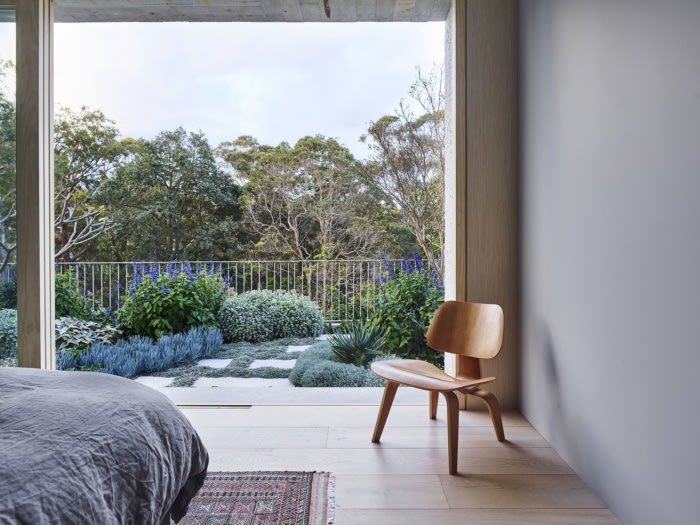Tree House
Madeleine Blanchfield Architects used their full creative liberty in designing the unconventional layout for the architect’s own family home located near Bronte Beach in Melbourne.
It is compact, light filled and rethinks the way a typical house is composed. Living is on the top floor, flexible rooms are defined by mood rather than purpose and separated by sliding glass panels. The inversion of the house is supported by unconventional planning. Views are borrowed from other spaces, including through bathrooms, so that outlook is never mono-directional. The house is immersed in the small garden and trees are visible from everywhere. Raw materials, lofty volumes and 360 degree vistas to the sky and trees make it a calm, light filled backdrop to family life and give it a strong sense of place. Materials are used in their raw form but selected for their inherent beauty. The house refuses to adhere to an interior and an exterior and is treated as a spatial whole in the landscape.
The Treehouse is on a steep block in Bronte. The budget was relatively modest and the owners wanted the house to shape the way they interacted as a family and with nature.
By placing the living areas on the top floor we were able to flood the house with light and capture a treetop outlook. Circulation springs off the entry void and stair which is sculptural, lit from above and leads people directly to the top living level. The living level has a quiet space and an active space, which have different proportions to affect the mood and sliding glass panels between.
There are no ‘rooms’ as such. Through rigorous planning we were able to remove unnecessary circulation space, maximise the size of the garden and focus on the proportions of the rooms and volumes. Light, finishes and quality of space took precedence over decorative elements and finishes. The garden is viewed from everywhere and is extended through the use of concrete planter beds giving the constant impression of being immersed in nature.
Finishes are muted but warm and create a calm, uplifting quality to the home. The kitchen bench is board marked concrete to reference the external planters and break down the delineation between interior and exterior.
Garden vistas are captured through adjacent spaces, including bathrooms, making the house feel much bigger than it is. The idea that some rooms are purely functional and to be closed off was rejected. A courtyard brings light into a bedroom and is covered with trafficable mesh so even the ground plane is used to bring in light. Windows on the top living level ensure that there is sun flooding into even the south facing rooms. A picture window captures the sunset and high level windows changing light throughout the day.
The project showcases the influence of design on family life. It re-evaluates widely accepted norms for a house and its’ relationship to site. It shows how boundaries between inside and outside can be broken down, rooms can be rethought and their inter-connections be flexible. Circulation space is minimised and seen as an opportunity for joyful movement. The house is made smaller and more efficient by rejecting typical planning strategies.
Adornment comes from the use of building materials as opposed to application of finishes. Off form concrete is used playfully with boards laid in different directions and angles to showcase the craft and process behind the finish. Lighting is extremely well considered in both architectural and decorative fittings. Much of the life of the house is at night and the effect of lighting on mood was taken very seriously.
The house is completely founded in passive sustainable principles. It orients to the north, has eaves, screens and sun-shading, uses recycled stone, concrete and raw sustainably sourced timber inside and out. Cross ventilation and thermal mass ensure the comfort and liveability of the home. PV cells, water tanks, hydronic heating and heat pump are all used to their best advantage.
Design: Madeleine Blanchfield Architects
Photography: Anson Smart

